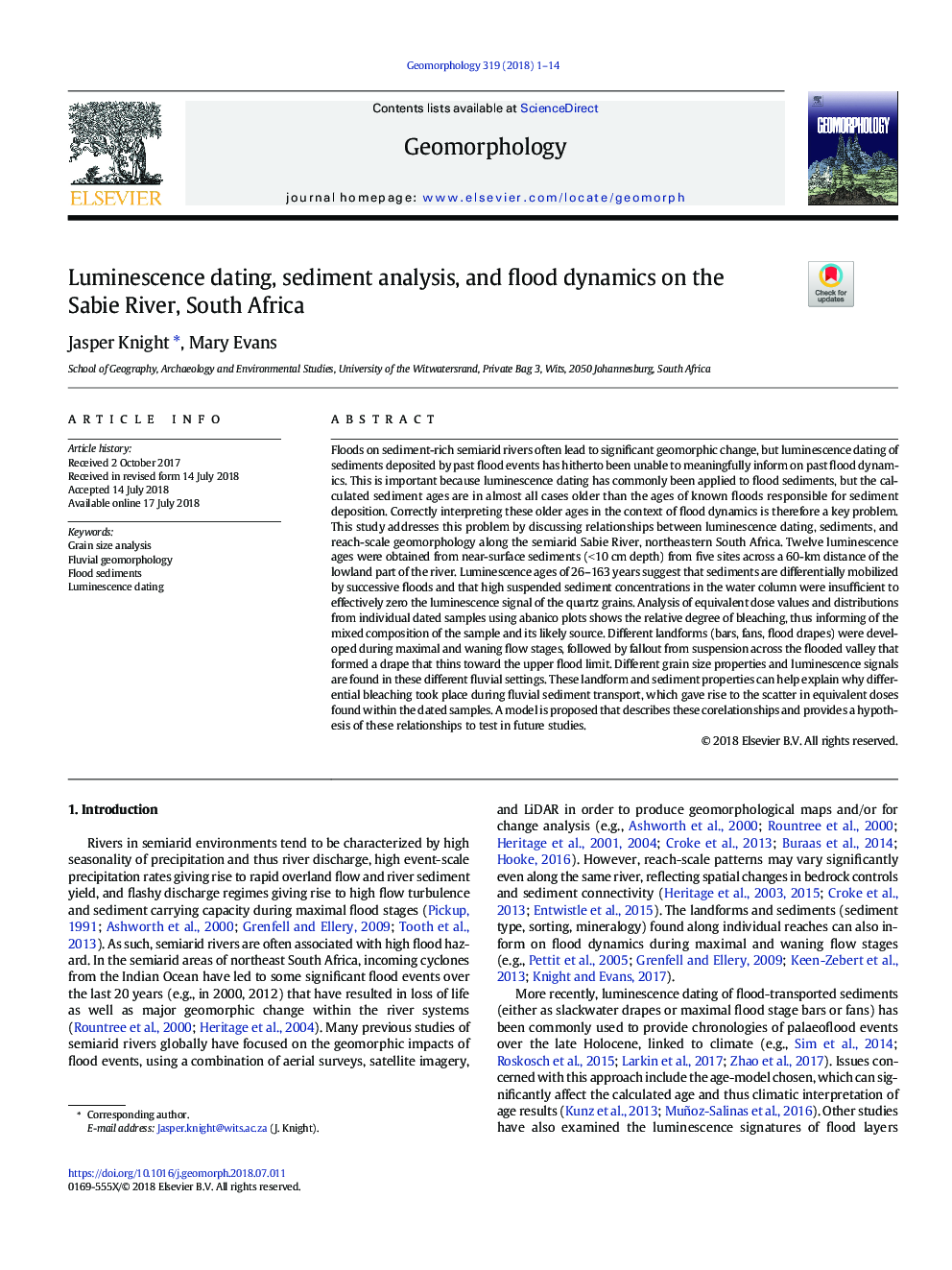| کد مقاله | کد نشریه | سال انتشار | مقاله انگلیسی | نسخه تمام متن |
|---|---|---|---|---|
| 8907910 | 1635331 | 2018 | 14 صفحه PDF | دانلود رایگان |
عنوان انگلیسی مقاله ISI
Luminescence dating, sediment analysis, and flood dynamics on the Sabie River, South Africa
ترجمه فارسی عنوان
دوستیابی لومینسانس، تجزیه و تحلیل رسوبات و پویایی سیلاب در رودخانه سابی، آفریقای جنوبی
دانلود مقاله + سفارش ترجمه
دانلود مقاله ISI انگلیسی
رایگان برای ایرانیان
کلمات کلیدی
موضوعات مرتبط
مهندسی و علوم پایه
علوم زمین و سیارات
فرآیندهای سطح زمین
چکیده انگلیسی
Floods on sediment-rich semiarid rivers often lead to significant geomorphic change, but luminescence dating of sediments deposited by past flood events has hitherto been unable to meaningfully inform on past flood dynamics. This is important because luminescence dating has commonly been applied to flood sediments, but the calculated sediment ages are in almost all cases older than the ages of known floods responsible for sediment deposition. Correctly interpreting these older ages in the context of flood dynamics is therefore a key problem. This study addresses this problem by discussing relationships between luminescence dating, sediments, and reach-scale geomorphology along the semiarid Sabie River, northeastern South Africa. Twelve luminescence ages were obtained from near-surface sediments (<10â¯cm depth) from five sites across a 60-km distance of the lowland part of the river. Luminescence ages of 26-163â¯years suggest that sediments are differentially mobilized by successive floods and that high suspended sediment concentrations in the water column were insufficient to effectively zero the luminescence signal of the quartz grains. Analysis of equivalent dose values and distributions from individual dated samples using abanico plots shows the relative degree of bleaching, thus informing of the mixed composition of the sample and its likely source. Different landforms (bars, fans, flood drapes) were developed during maximal and waning flow stages, followed by fallout from suspension across the flooded valley that formed a drape that thins toward the upper flood limit. Different grain size properties and luminescence signals are found in these different fluvial settings. These landform and sediment properties can help explain why differential bleaching took place during fluvial sediment transport, which gave rise to the scatter in equivalent doses found within the dated samples. A model is proposed that describes these corelationships and provides a hypothesis of these relationships to test in future studies.
ناشر
Database: Elsevier - ScienceDirect (ساینس دایرکت)
Journal: Geomorphology - Volume 319, 15 October 2018, Pages 1-14
Journal: Geomorphology - Volume 319, 15 October 2018, Pages 1-14
نویسندگان
Jasper Knight, Mary Evans,
